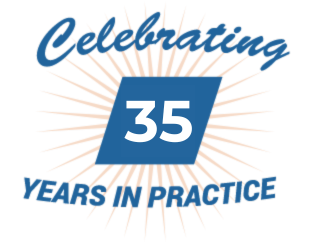Jersey City Allocation of Fault to John Doe: What You Need to Know
Posted June 13th, 2018 by Anthony Carbone, PC.
Categories: Auto Accidents.
 You might find it hard to believe. However, John Doe actually does exist in real life. It’s hard to quantify how many people are really called John Doe. After all, it’s a name commonly used in lawsuits for unidentifiable persons. With that said, it’s hard to imagine how a John Doe defendant could ever be allocated fault.
You might find it hard to believe. However, John Doe actually does exist in real life. It’s hard to quantify how many people are really called John Doe. After all, it’s a name commonly used in lawsuits for unidentifiable persons. With that said, it’s hard to imagine how a John Doe defendant could ever be allocated fault.
The New Jersey Court Rules actually provide for using the name John Doe when the given name and surname of a party is unknown. The court refers to these individuals as “fictitious.” However, that doesn’t mean that your accident claim is made up – just that you haven’t been able to identify the culpable defendant.
Meanwhile, it’s not just individuals who are assigned fictitious names in legal pleadings. You might see a business entity referred to as ABC Company or XYZ Company as a named defendant. The court will understand that you haven’t been able to identify the “real” defendants, because your lawsuit will also name them as fictitious defendants.
How could someone unknown be responsible for your accident? Take for example the case of the phantom vehicle. If you were the victim of a hit and run accident, your attorney might need to name a John Doe defendant – or Jane Doe, if you were able to identify the other driver as a female.
Meanwhile, there are a number of reasons that a company may be named as a fictitious defendant. What if you were injured while working on a defective machine? If investigation fails to reveal the name of the machine’s manufacturer, the defendant will be named as ABC Company.
Now back to our original question. If the injured party is unable to identify the individual or company that contributed to the accident, can fault be allocated? A Supreme Court case decided earlier this year offers some important insight.
Supreme Court on John Doe Defendants
The New Jersey State Supreme Court decided Krzykalski v. Tindall, 232 N.J. 525 on April 17, 2018, after hearing oral argument from the parties in January of this year. The lawsuit involves a car crash in which Mark R. Kryzkalski suffered severe injuries.
First, the facts of the case as presented in the court’s decision. Mark Krzykalski was operating his car in the left lane of what appears to be a two-lane roadway. Meanwhile, David Tindall was the operator of the vehicle directly in back of him.
The accident happened at an intersection as traffic was going through it. Suddenly, and without warning, a vehicle decided to make a left turn from the right lane, thereby cutting off everyone in the left lane. Although Kryzkalski was able to stop his car without hitting the one in front of him, Tindall was not so lucky. As a result, he crashed into the rear of Kryzkalski’s vehicle.
When Krzykalski’s attorney filed a lawsuit seeking damages for the crash, Tindall was not the only named defendant. The driver of the vehicle who made the left turn from the right lane was never identified. Therefore, he was named as a John Doe.
Notably, personal automobile insurance policies understand the concept of John Doe defendants. In fact, there is coverage available under the Uninsured Motorist (“UM”) portion of individual insurance contracts. When Krzykalski notified his personal insurance carrier of the accident, he also asserted a UM claim.
Comparative Negligence
According to NJSA 2A:15-5.1, comparative negligence rules apply in determining damages due to each of the parties. The first assumption is that the plaintiff must be less at-fault than the combined negligence of the other parties.
When the Krzykalski matter was presented to the jury, the judge instructed them to also allocate fault to each of the parties. Plaintiff’s counsel objected to the inclusion of John Doe on the verdict sheet, suggesting that he was not a real person and could not be found at fault. The court disagreed.
When the jury came back with a $107,890 award, there was also a determination regarding comparative negligence. Tindal was deemed 3% negligent, while the John Doe defendant was allocated 97% of the blame.
One of the legal arguments in the case was that the UM carrier did not intervene in the case. However, the court found that the insurance company did have notice of the matter and therefore could have appeared in court. They will be responsible for 97% of the damage award – up to the limits personally selected on Krzykalski’s car insurance.
Contact Us
Were you injured in an accident caused by an unidentifiable defendant? The Law Offices of Anthony Carbone has decades of experience handling personal injury claims. Contact us to see how we can help you during this difficult time.


